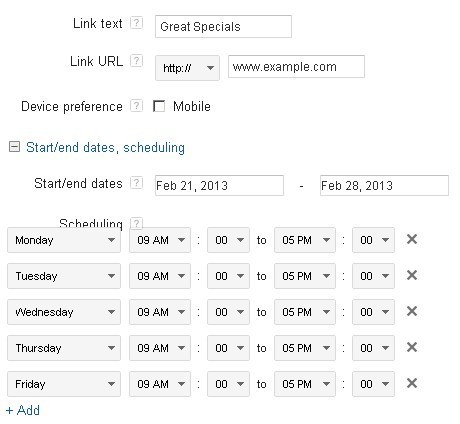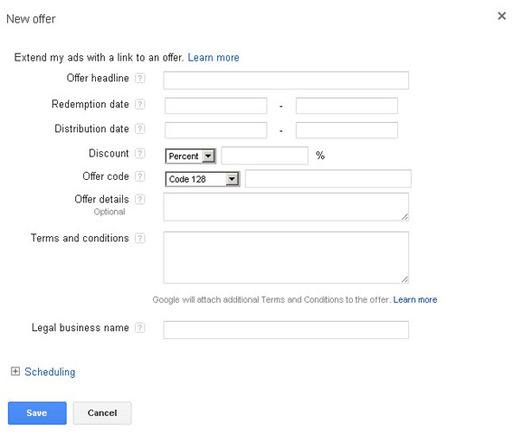In “Cheaper Clicks from AdWords Coming?,” my article from Feb. 2012, I questioned whether the then unprecedented decline in cost-per-click rates would be a blip or a trend. One year later, Google apparently thinks it’s a trend, as Google is requiring all advertisers to adopt its new Enhanced Campaigns.
This will likely reverse the decline in CPC rates that resulted from increased adoption of smartphones and tablets, when advertisers expected lower conversion rates from mobile traffic, and bid down their mobile campaigns. With the new rollout you will still be able to bid down mobile phone clicks, but the way you do that will be much different. If you don’t properly migrate, you’ll be automatically opted into mobile campaigns — paying higher rates — and that could significantly impact the profitability of your campaigns.
To be clear, Google’s transition to Enhanced Campaigns is an important evolution in AdWords, and confers many benefits. It’s important that you prepare for this transition, however, or it could jeopardize the profitability of your campaigns.
Five important changes you should prepare for are as follows.
1. No Segmenting for Tablets
In the past, you’ve been able to segment different campaigns for tablet users and traditional computer users. But now you will no longer be able to. The reason this matters is that many merchants bid their tablet CPCs lower or higher depending on their rate of conversion from tablet users. Since you won’t be able to target unique bids to tablet users, you’ll need to factor this conversion rate impact into your overall bid strategy, which may require you to make significant changes to your bids.
2. No Mobile-only Campaigns
In the past, you’ve been able to create mobile-only campaigns — i.e. smartphones — that target specific keywords, and you’ve been able to adjust bids for individual keywords based on performance. After Enhanced Campaigns rolls out, however, you will have less control. You will have to adjust your smartphone CPC rates, on the campaign rather than the keyword level, by creating “mobile bid adjustments.”
This screenshot shows how the campaign level bid adjustments looks for mobile devices. In this case we’re setting the mobile bid adjustment to 20 percent. In other words, if you are bidding $1 per click on desktops/tablets, your bid for smartphones will be reduced 20 percent to $0.80.
Campaign level bids will need to be adjusted for mobile devices.
3. Campaigns Automatically Opted-in to Mobile
This is perhaps the biggest reason to take control of your migration to Enhanced Campaigns, by following prompts Google will display inside your account, like the one below.
Campaigns will automatically be upgraded to Enhanced.
If Google automatically upgrades you to Enhanced Campaigns, than your campaigns will automatically be opted into Google’s mobile network, and you will be paying higher rates for mobile clicks than might be profitable for you. This has the potential to hurt a lot of small businesses who don’t know any better.
The right time to migrate may not be now, however. Once you migrate you cannot revert. If your campaigns are already designated by device, you may want to wait a few months and migrate immediately before the forced upgrade takes place. Companies operating smaller campaigns that just target searches from traditional computers, however, can migrate to Enhanced Campaigns as soon as they’d like.
4. Sitelinks Now Available at the Ad Group Level
In the past, Sitelinks — i.e., additional links below the main body of the pay-per-click ad — could only be setup at the Campaign level. But now they can be setup at the Ad Group level. To understand why this is important, consider the example of an online retailer bidding on the phrase “baseball cleats.” In the screen shot below, you’ll see the advertiser has Sitelinks set up — advertising “Name Brands Up To 80% Off,” “Gift Cards,” “New Arrivals,” and “Baseball Bats.”
Sitelinks can now be set up at the Ad Group level. In this example, Sitelinks are "Name Brands Up To 80% Off Every Day – Gift Cards – New Arrivals – Baseball Bats."
The reason these Sitelinks are so unspecific is that you can only set Sitelinks up at the Campaign level, which means the advertisers had to select generic Sitelinks that applied not only to, say, baseball cleats, but myriad related concepts. Now that Sitelinks can be set at the Ad Group level, the Sitelinks could be more targeted to concepts like “Popular Cleats,” “Clearance Cleats,” or “Nike Cleats.” This will result in a more effective and more profitable ads.
The screen shot below shows the interface for creating a Sitelink, and how they can be automatically adjusted based on the time of day, or day of week. You can also set a mobile preference to target specific Sitelinks to mobile users.
Google’s interface for managing Sitelinks.
5. Offer Extensions Now Available at the Ad Group Level
This screenshot details the offer extension interface, which allows you to highlight time-sensitive offers directly within your ads. For example, if your conversion rates on “Baseball cleats,” plummet over the weekend, you can schedule special sales for Saturday and Sunday that will automatically stop on Monday.
The offer extension interface.
Conclusion
I talk with many online retailers who spend thousands of dollars per month on AdWords, and less than two hours per month on the management of those campaigns. Enhanced Campaigns is likely only one of many major changes Google will make to AdWords this year. Retailers who do not continually optimize their campaigns — in light of the changes — will incur higher costs. In the case of Enhanced Campaigns, in particular, there is a big cost to ignoring the upgrade.






